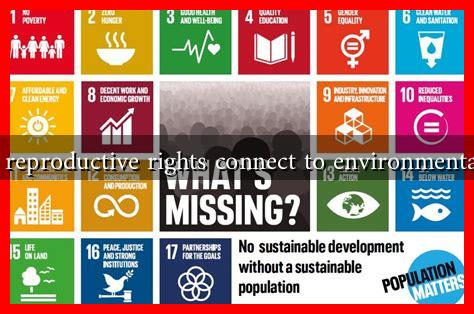-
Table of Contents
How Do Reproductive Rights Connect to Environmental Issues?
Reproductive rights and environmental issues may seem like disparate topics at first glance, but they are intricately linked in ways that impact both individual lives and the planet. Understanding this connection is crucial for developing comprehensive policies that address both human rights and environmental sustainability. This article explores the intersections between reproductive rights and environmental issues, highlighting the implications for public health, resource management, and social equity.
The Basics of Reproductive Rights
Reproductive rights encompass a range of issues related to the ability of individuals to make informed choices about their reproductive health. This includes access to contraception, safe abortion services, prenatal care, and comprehensive sex education. According to the World Health Organization (WHO), reproductive rights are fundamental to achieving gender equality and improving health outcomes.
Environmental Impact of Population Growth
One of the most significant ways reproductive rights intersect with environmental issues is through population growth. As the global population continues to rise, the strain on natural resources intensifies. Here are some key points to consider:
- Resource Depletion: Increased population leads to higher demand for water, food, and energy, resulting in over-extraction and depletion of natural resources.
- Climate Change: More people contribute to higher greenhouse gas emissions, exacerbating climate change and its associated impacts.
- Habitat Destruction: Expanding urban areas and agricultural land to accommodate growing populations often leads to habitat loss and biodiversity decline.
By empowering individuals with reproductive rights, particularly women, societies can better manage population growth. Studies have shown that when women have access to education and reproductive health services, they tend to have fewer children, which can alleviate some of the pressure on the environment.
Health and Environmental Justice
The connection between reproductive rights and environmental issues is also evident in the realm of health. Environmental degradation disproportionately affects marginalized communities, often leading to adverse health outcomes. For instance:
- Pollution Exposure: Communities near industrial sites often face higher levels of pollution, which can lead to reproductive health issues such as low birth weight and infertility.
- Access to Healthcare: Environmental factors can limit access to healthcare services, making it difficult for individuals to obtain reproductive health care.
- Climate Vulnerability: Women, particularly in developing countries, are often more vulnerable to the impacts of climate change, which can affect their reproductive health and rights.
Addressing these disparities requires a holistic approach that integrates reproductive rights into environmental justice initiatives. For example, organizations like Center for Reproductive Rights advocate for policies that protect both reproductive health and environmental sustainability.
Case Studies: Successful Integrations
Several countries have successfully integrated reproductive rights into their environmental policies, demonstrating the potential for positive outcomes:
- Bangladesh: The government has implemented family planning programs that have led to a significant decrease in fertility rates, contributing to improved environmental conditions and resource management.
- Rwanda: Post-genocide, Rwanda focused on women’s empowerment and reproductive health, which has helped stabilize population growth and improve environmental sustainability.
These case studies illustrate that when reproductive rights are prioritized, both human and environmental health can benefit.
Conclusion: A Call for Integrated Policies
The connection between reproductive rights and environmental issues is clear: empowering individuals with the ability to make informed choices about their reproductive health can lead to more sustainable population growth and improved environmental outcomes. As we face pressing global challenges such as climate change and resource depletion, it is essential to adopt integrated policies that recognize the interdependence of these issues.
By advocating for reproductive rights as part of environmental strategies, we can create a healthier planet and promote social equity. Policymakers, activists, and communities must work together to ensure that reproductive health is not sidelined in the fight for environmental justice. The future of our planet depends on it.


